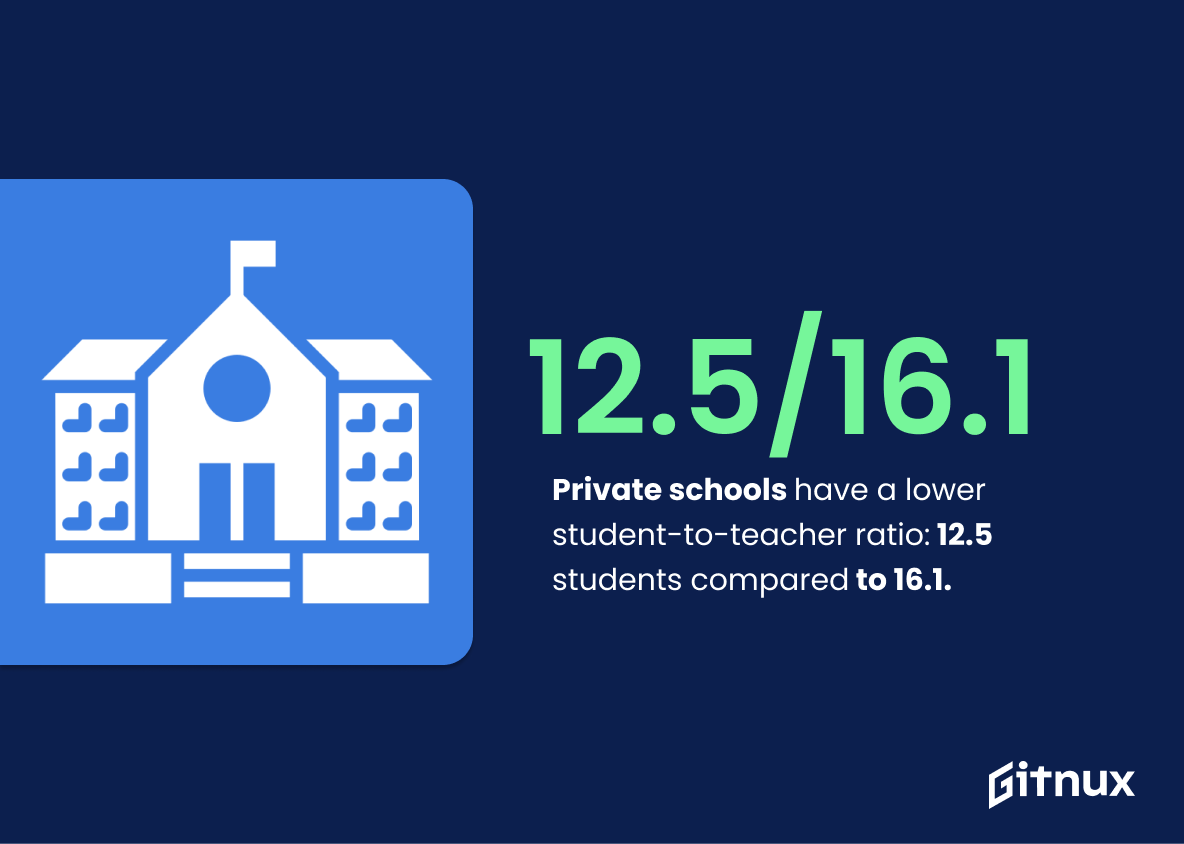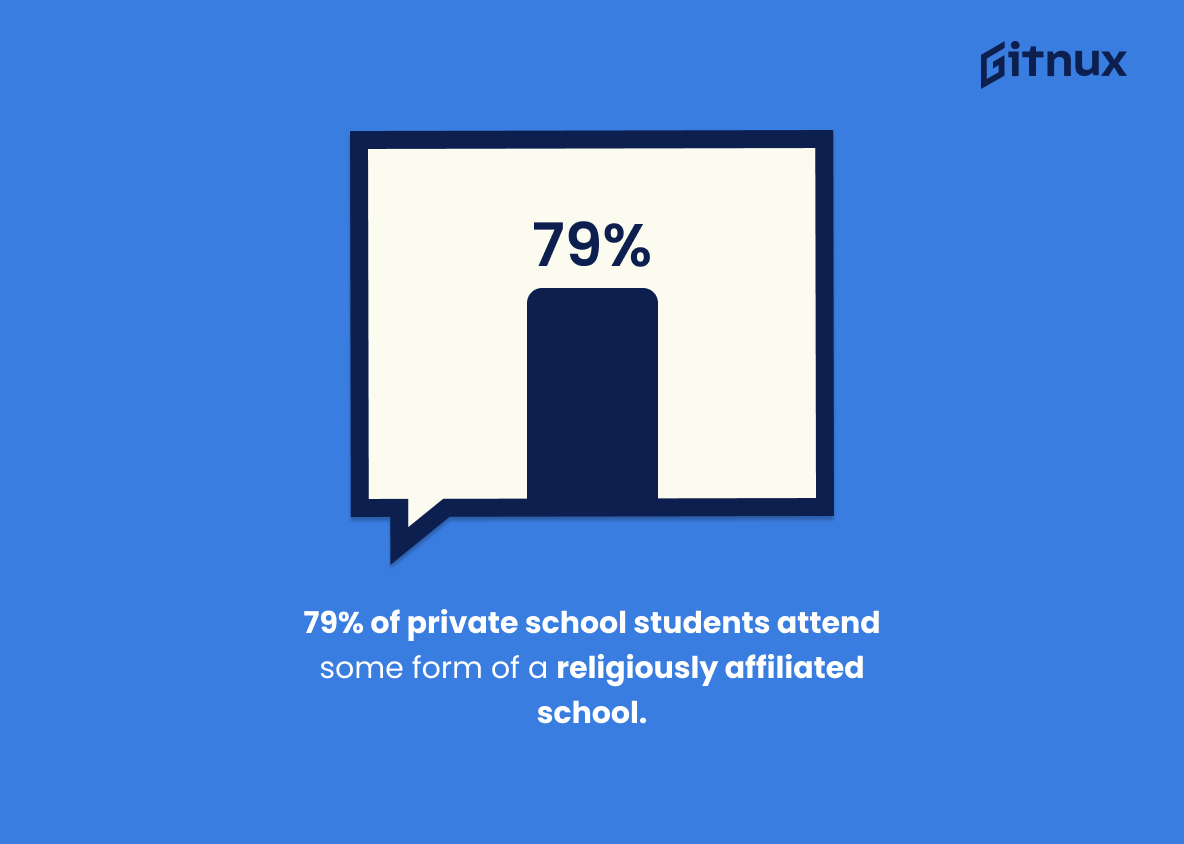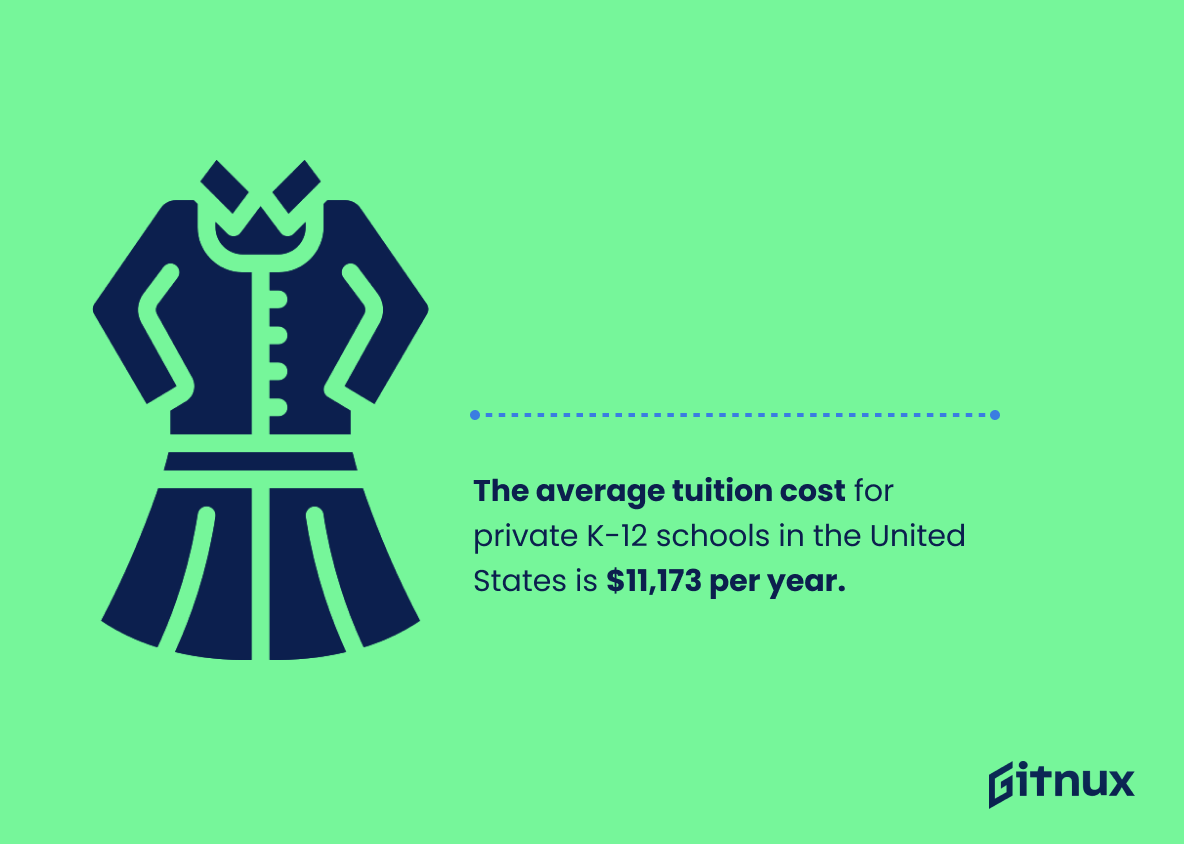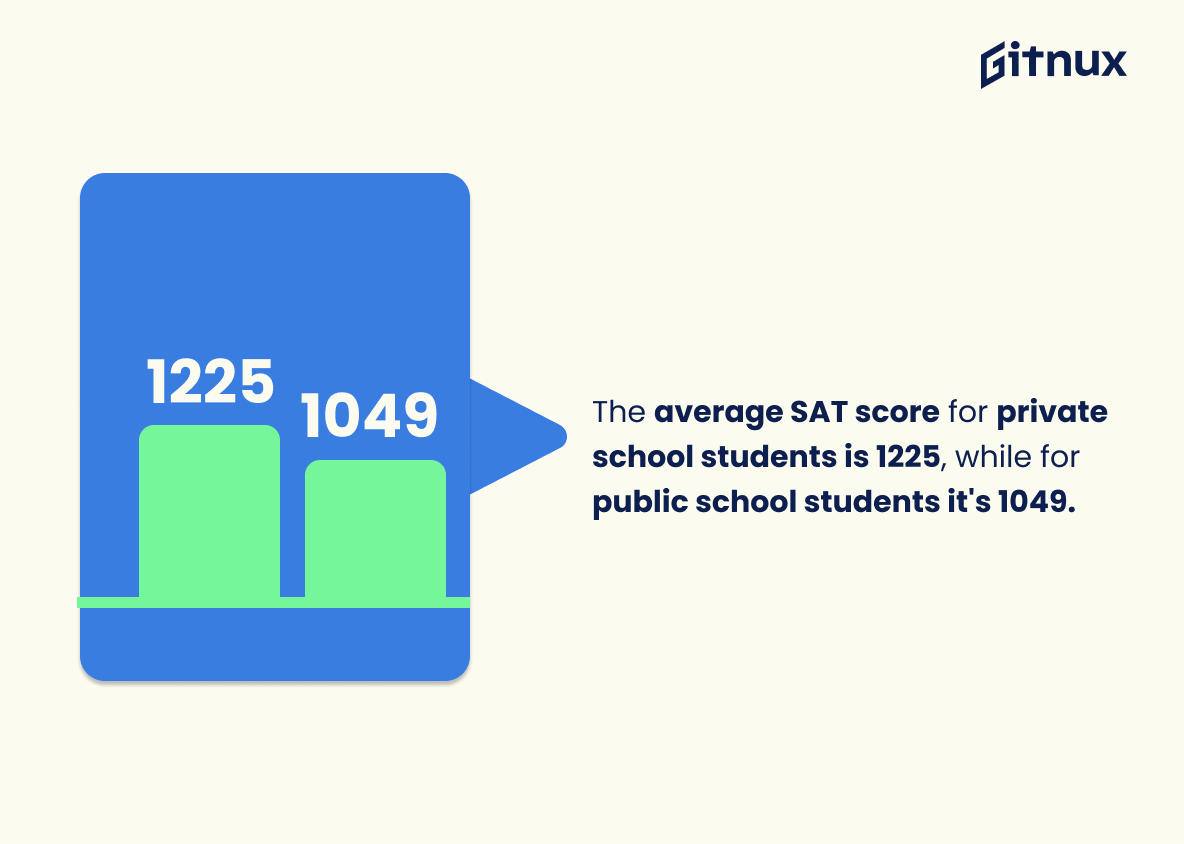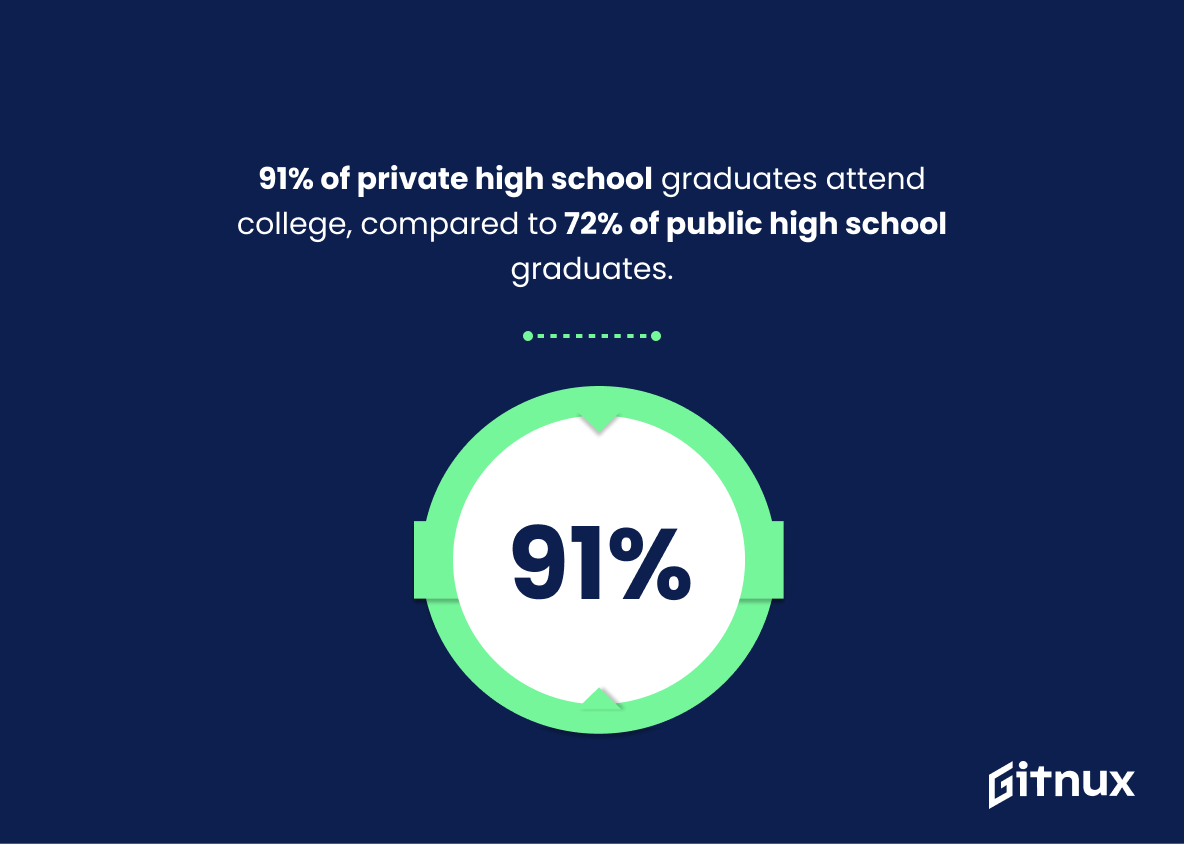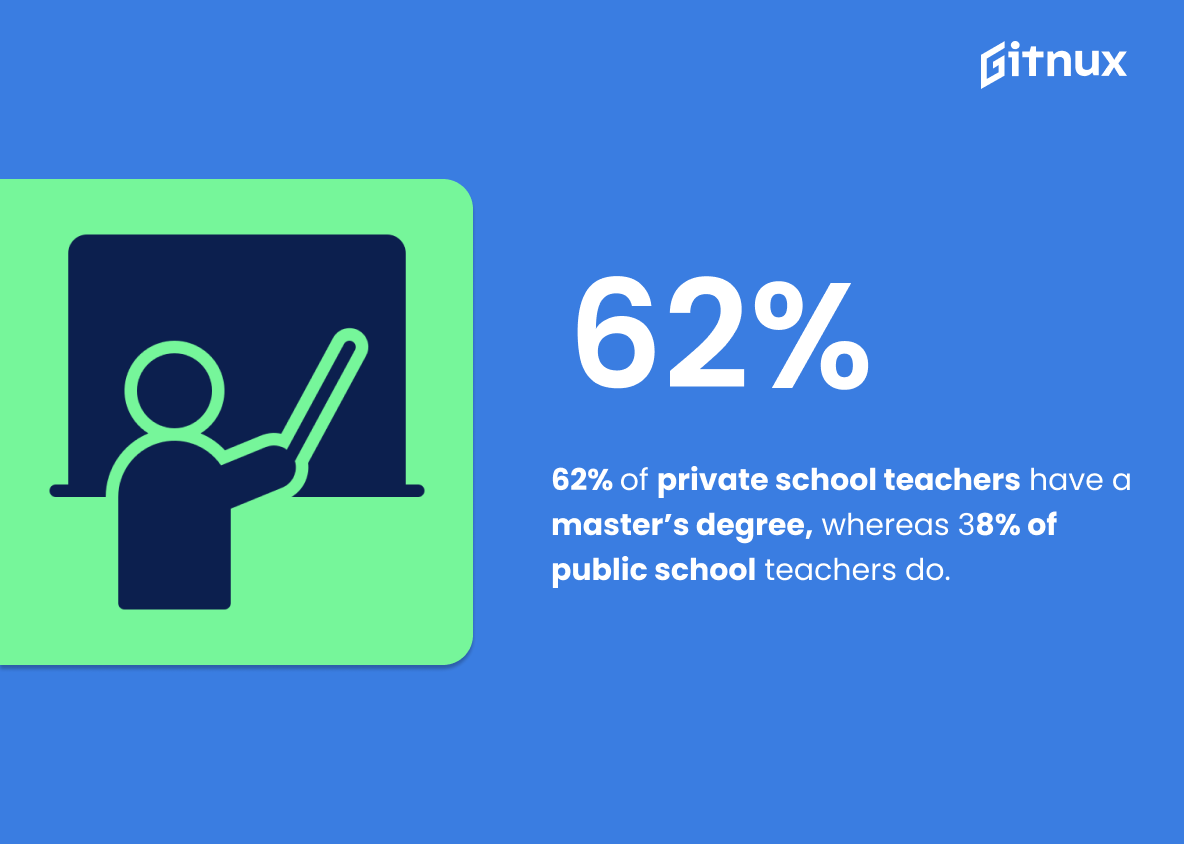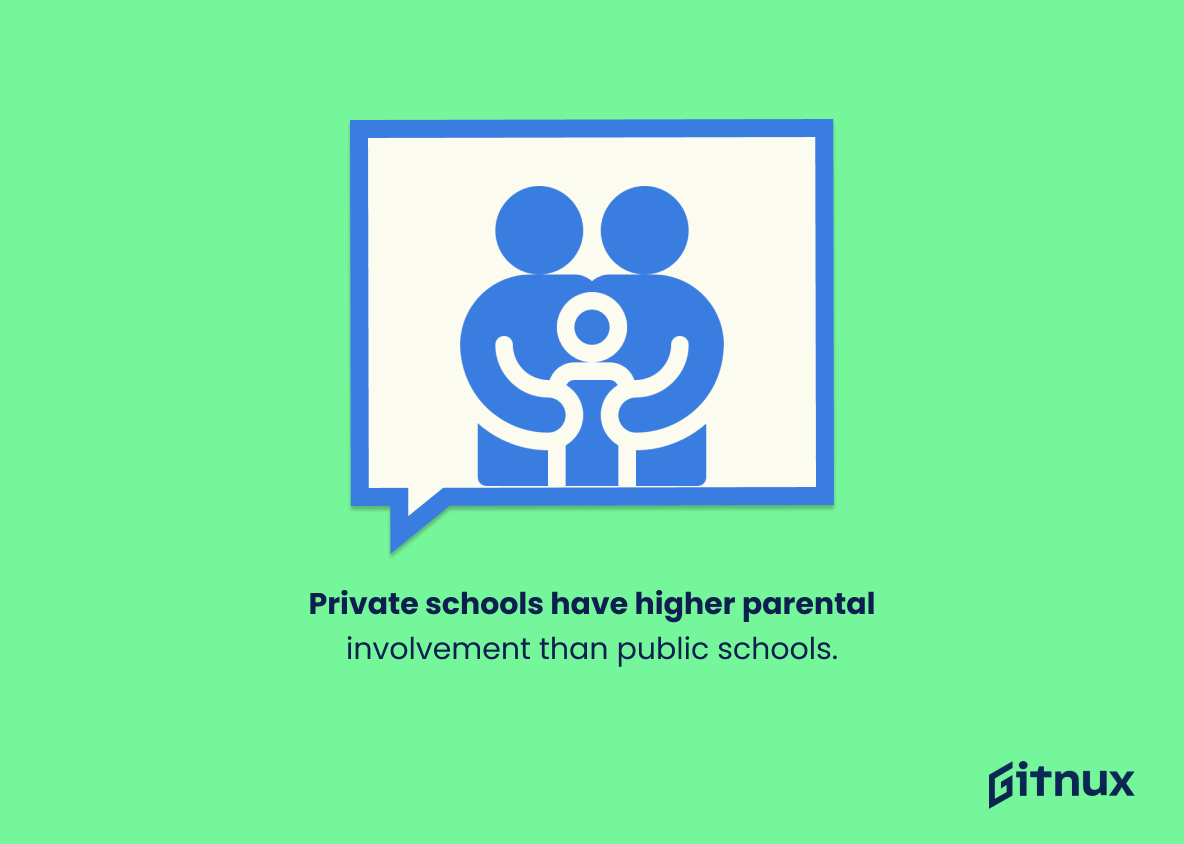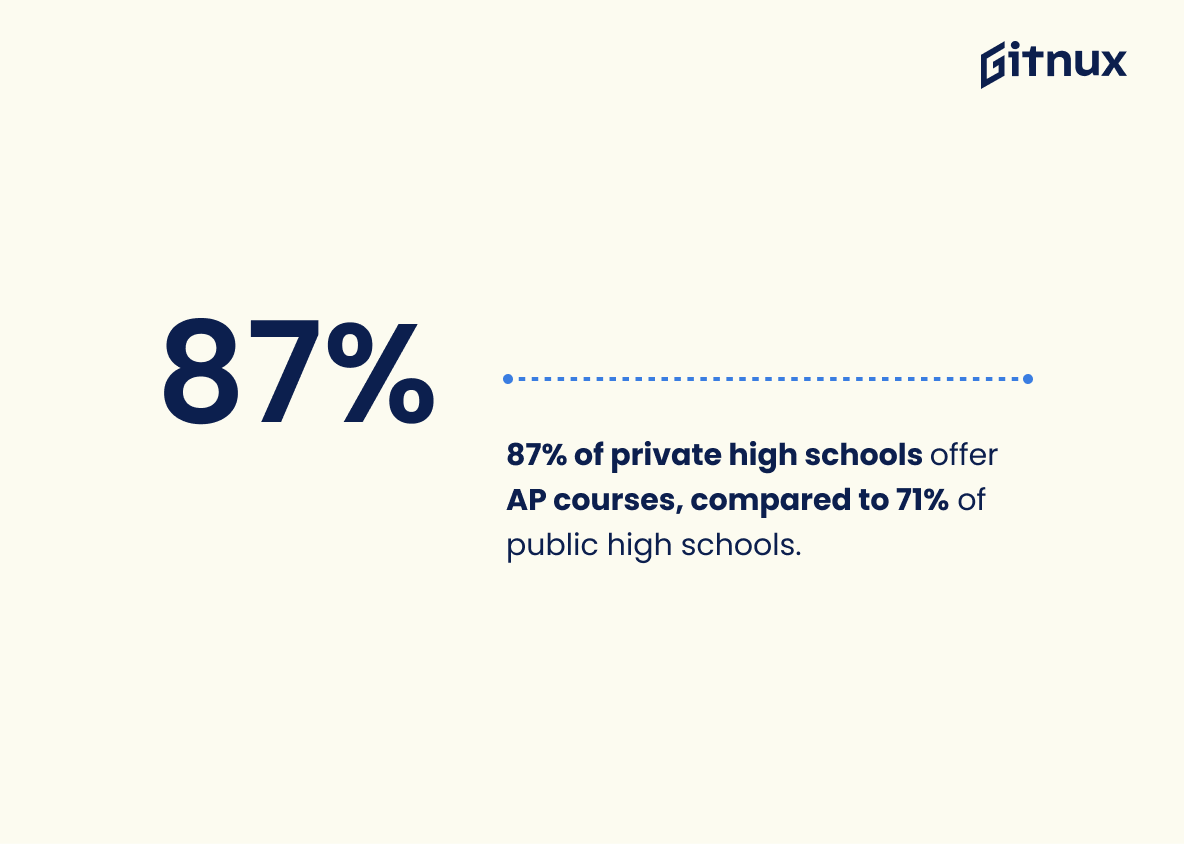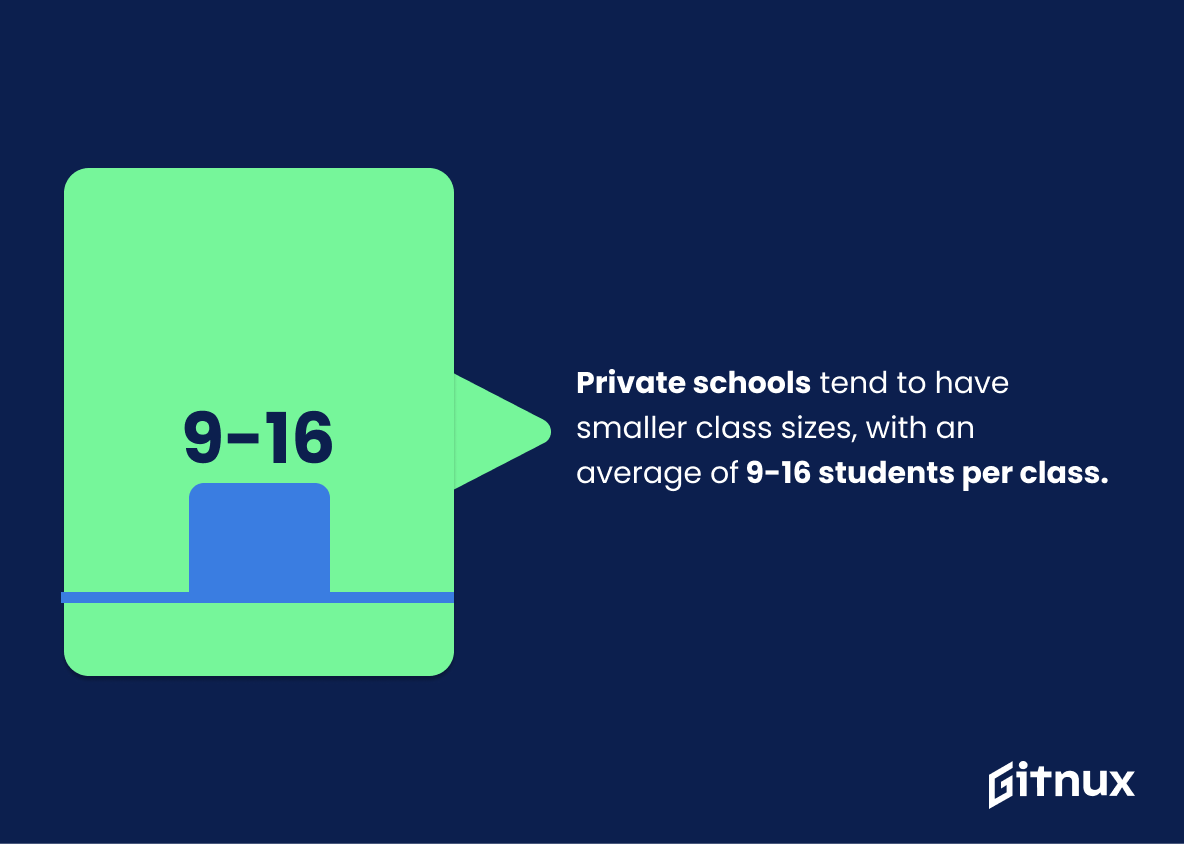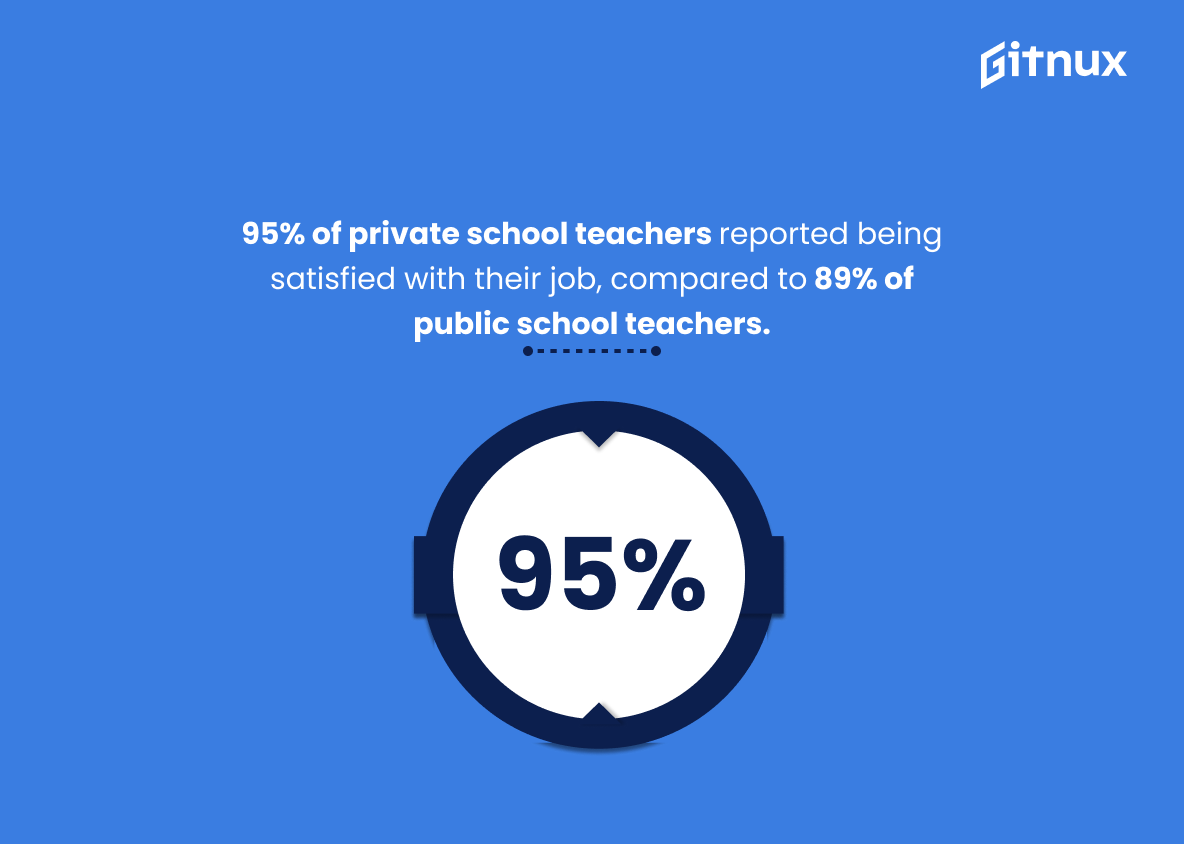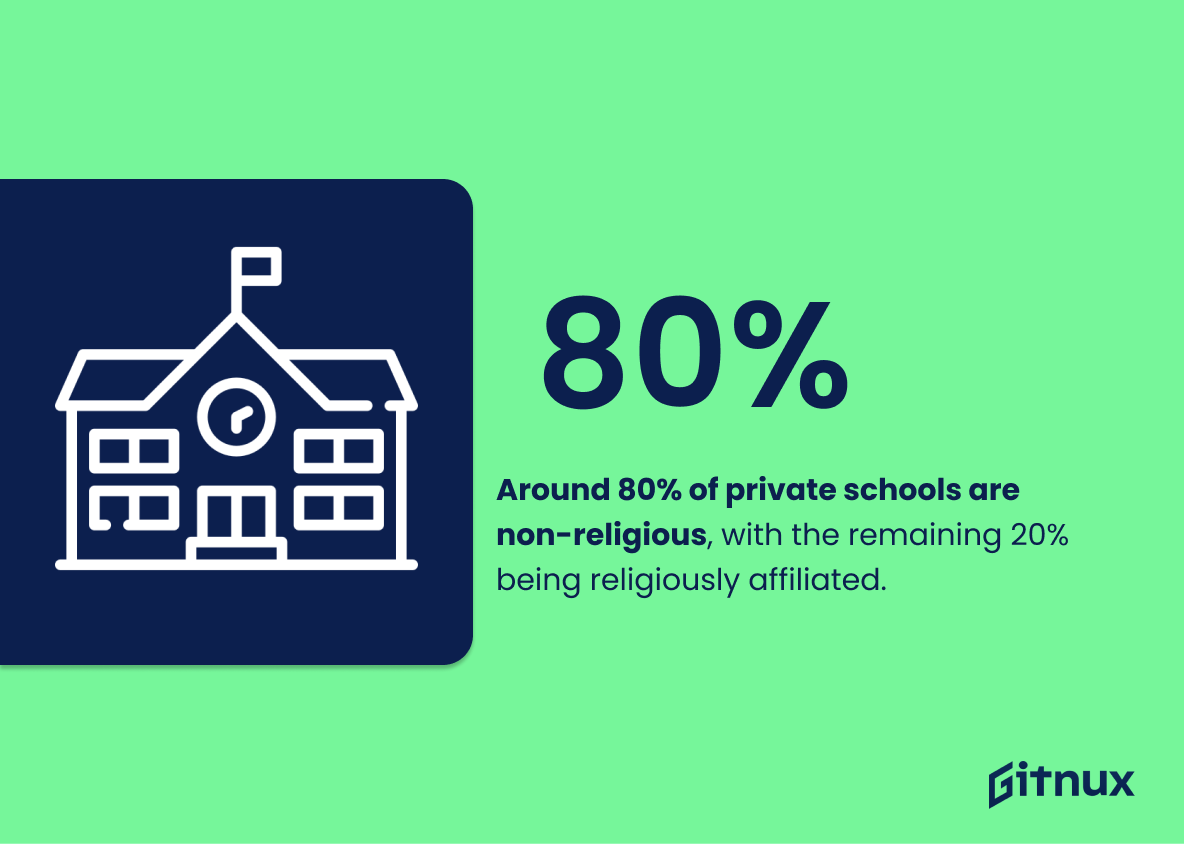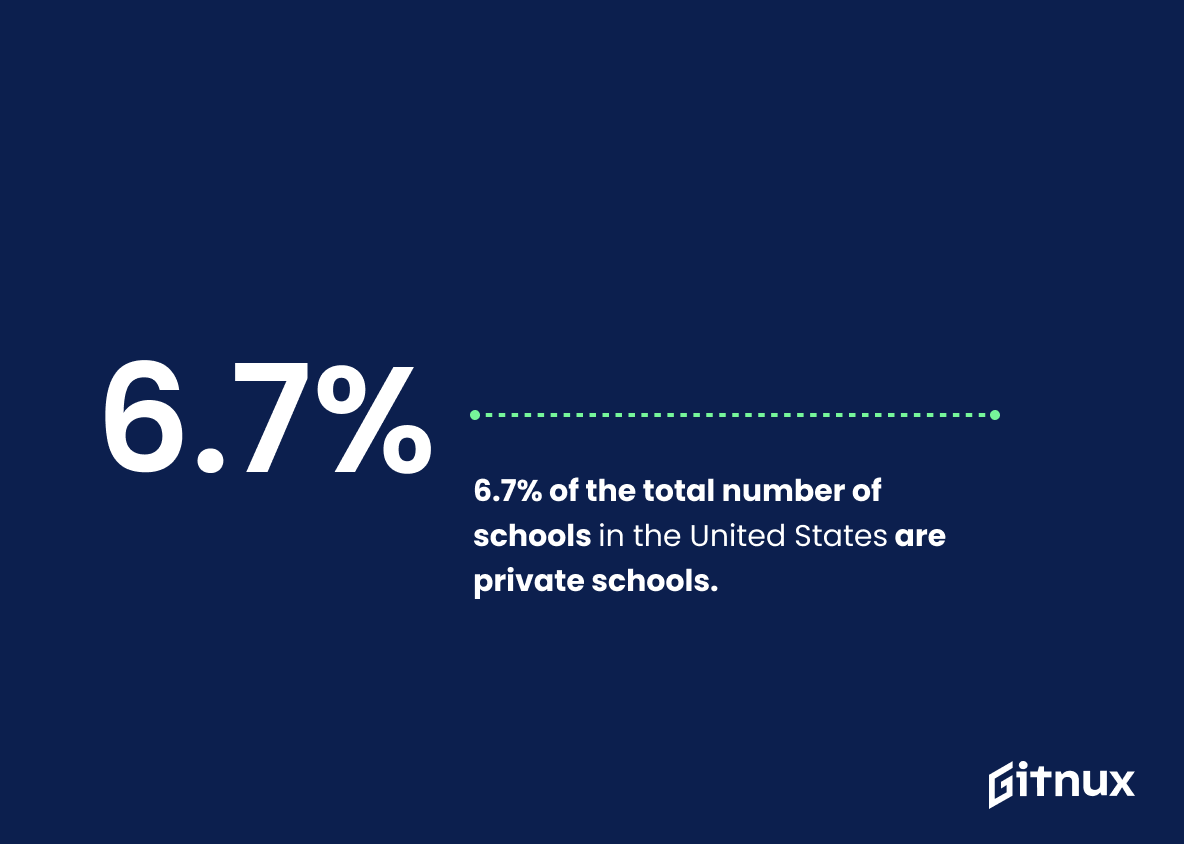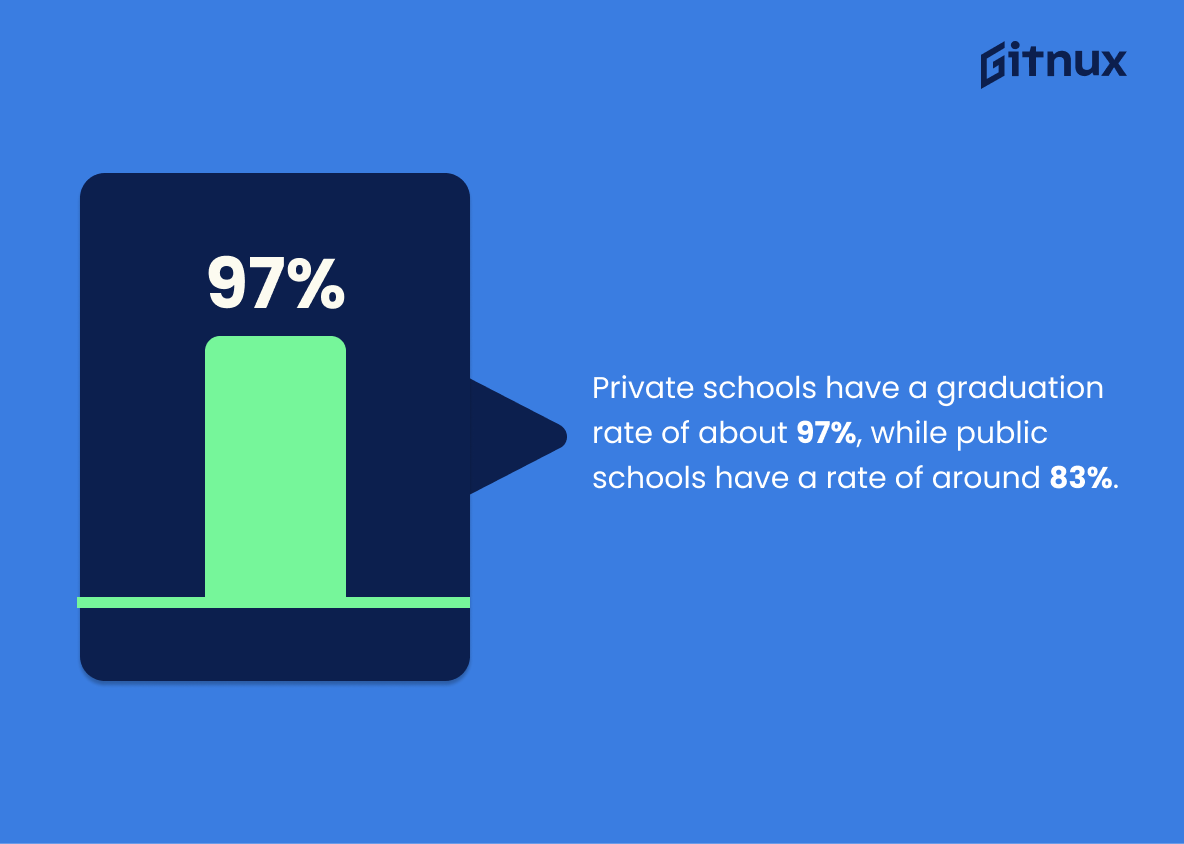Comparing public and private schools can be a daunting task. With so many factors to consider, it’s important to have the facts in order to make an informed decision about which type of school is best for your child. To help you understand the differences between these two types of educational institutions, we’ve compiled 20 statistics that provide insight into their respective student-to-teacher ratios, tuition costs, SAT scores, college acceptance rates and more. From religious affiliations to teacher qualifications and class sizes – this comprehensive list will give you all the information needed when considering whether or not a public or private school is right for your family.
This statistic is indicative of the fact that private schools offer a more personalized learning experience for their students. With fewer students per teacher, private schools are able to provide more individualized attention and instruction to their students, allowing them to better understand and retain the material. This can lead to higher academic achievement and better overall educational outcomes.
79% of private school students attend some form of a religiously affiliated school.
This statistic is significant in the context of a blog post about Public School Versus Private School Statistics because it highlights the prevalence of religious affiliation among private school students. It is important to note that the majority of private school students are attending schools that are religiously affiliated, which can have a major impact on the educational experience of these students. This statistic can be used to illustrate the differences between public and private school education, and to provide insight into the religious influences that may be present in private school education.
Public School Versus Private School Statistics Overview
The average tuition cost for private K-12 schools in the United States is $11,173 per year.
This statistic is a key indicator of the financial burden associated with private K-12 schooling in the United States. It provides a clear comparison to the cost of public schooling, which is typically much lower, and can help readers understand the financial implications of choosing a private school. Furthermore, this statistic can help readers understand the overall cost of private schooling, which can be a major factor in deciding whether or not to pursue a private education.
The national average SAT score for private school students is 1225, while for public school students it is 1049.
This statistic serves as a stark reminder of the disparity between public and private school students when it comes to SAT scores. It highlights the fact that private school students have access to more resources and better educational opportunities than their public school counterparts, which can have a significant impact on their academic performance.
91% of private high school graduates attend college, compared to 72% of public high school graduates.
This statistic is a telling indication of the disparity between public and private high school graduates when it comes to college attendance. It demonstrates that private high school graduates are more likely to pursue higher education than their public school counterparts, suggesting that private schools may be better equipped to prepare students for college.
62% of private school teachers have a master’s degree, whereas 38% of public school teachers do.
This statistic is indicative of the fact that private school teachers are more likely to have a higher level of education than public school teachers. This is an important point to consider when comparing the two types of schools, as it suggests that private schools may be providing a higher quality of education than public schools.
Private schools generally provide a higher level of students’ parental involvement compared to public schools.
This statistic is significant in the context of a blog post about Public School Versus Private School Statistics because it highlights the importance of parental involvement in the educational process. Private schools often have more resources and support available to parents, which can lead to increased involvement in their child’s education. This can have a positive impact on student performance, as research has shown that parental involvement is linked to higher academic achievement. Additionally, this statistic can be used to illustrate the differences between public and private schools, and how those differences can affect student outcomes.
87% of private high schools offer Advanced Placement (AP) courses, while only 71% of public high schools do.
This statistic is indicative of the disparity between public and private high schools in terms of the educational opportunities they provide. Private high schools are more likely to offer AP courses, which can give students an edge in college admissions and provide them with a more rigorous academic experience. This discrepancy highlights the need for public schools to provide more resources and support to their students in order to ensure they have access to the same educational opportunities as those attending private schools.
Private schools tend to have smaller class sizes, with an average of 9-16 students per class.
This statistic is significant in the context of a blog post about Public School Versus Private School Statistics because it highlights the stark contrast between the two types of educational institutions. Private schools typically have much smaller class sizes, allowing for more individualized attention and instruction for each student. This can lead to a more effective learning environment and better academic outcomes for students.
95% of private school teachers reported being satisfied with their job, compared to 89% of public school teachers.
This statistic is significant in the context of Public School Versus Private School Statistics, as it highlights the disparity between the job satisfaction of teachers in public and private schools. It suggests that private school teachers are more content with their job than their public school counterparts, which could be attributed to a variety of factors such as better pay, better working conditions, or more autonomy. This statistic could be used to further explore the differences between public and private schools and the impact they have on teacher satisfaction.
About 80% of private schools are non-sectarian (non-religious), while the remaining 20% are religiously affiliated.
This statistic is significant in the context of a blog post about Public School Versus Private School Statistics because it provides insight into the diversity of private school options available. It demonstrates that while the majority of private schools are non-sectarian, there are still a substantial number of religiously affiliated schools available for those who wish to pursue a faith-based education.
Public schools require teachers to be certified, while private schools often do not have this requirement.
This statistic is significant in the context of a blog post about Public School Versus Private School Statistics because it highlights a key difference between the two types of schools. It demonstrates that public schools have a higher standard for their teachers, as they must be certified, while private schools may not have this requirement. This difference in standards may have an impact on the quality of education that students receive in each type of school.
6.7% of the total number of schools in the United States are private schools.
This statistic is a crucial piece of information when considering the differences between public and private schools in the United States. It provides a clear indication of the relative size of the two sectors, and helps to illustrate the impact that private schools have on the overall education landscape. Furthermore, it can be used to compare the resources available to students in each sector, and to assess the relative success of each type of school.
Nationwide, 4-year high school graduation rates for private schools are about 97%, while for public schools, they are around 83%.
This statistic is a telling indication of the stark difference between public and private school education. It demonstrates that private schools are providing a higher quality of education, as evidenced by the much higher graduation rate. This is an important statistic to consider when weighing the pros and cons of public and private school education.
Private schools typically have more focused and longer instructional time than public schools.
This statistic is significant in the context of a blog post about Public School Versus Private School Statistics because it highlights the fact that private schools often provide students with more instructional time than public schools. This can be beneficial for students, as it allows them to gain a deeper understanding of the material they are learning and can help them to develop better study habits. Additionally, the longer instructional time can help to ensure that students are better prepared for college and future career opportunities.
As of 2017-2018, racial diversity in private schools was at 22.6%, compared to 51.4% in public schools.
This statistic is a stark reminder of the disparities between public and private schools when it comes to racial diversity. It highlights the fact that private schools are not providing the same level of access to students of all backgrounds as public schools, and that this inequality needs to be addressed.
90% of private high school graduates applied to college, while 57% of public high school graduates did.
This statistic is a telling indication of the disparity between public and private school education. It suggests that private high school graduates are more likely to pursue higher education than their public school counterparts, likely due to the higher quality of education they receive. This is an important statistic to consider when discussing the differences between public and private school education.
Conclusion
After looking at the statistics, it is clear that private schools offer a variety of advantages over public schools. Private school students have smaller class sizes and higher teacher-to-student ratios, as well as more focused instructional time. They also tend to have higher SAT scores and college acceptance rates than their public school counterparts. Additionally, private schools typically provide more financial aid opportunities for families in need and are often religiously affiliated or nonsectarian institutions with greater parental involvement levels. However, these benefits come at a cost; tuition fees for private K-12 education can be significantly higher than those of public schooling options. Ultimately, parents must weigh all factors when deciding which type of educational institution best suits their child’s needs and interests.
References
0. – https://www.nces.ed.gov
1. – https://www.publicschoolreview.com
2. – https://www.nais.org
3. – https://www.privateschoolreview.com
4. – https://www.core.ac.uk
5. – https://www.cfnc.org
6. – https://www.educationcorner.com
7. – https://www.edweek.org
